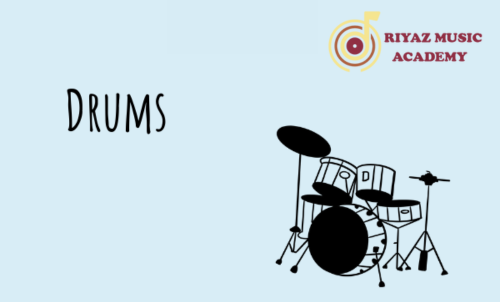What you will
learn?
How to play with a metronome
Learn to play with a track
Learn the stick technique
Identify the different parts of a drum kit
Learn basic patterns in different styles of music
Learn practice techniques
How does it work?
-
Click on Book now.
-
You will be directed to fill a form with your details. Please fill this and click on
Submit. A Riyaz educator will get in touch with you to schedule your first class.
-
After understanding your requirements, our expert will recommend a suitable learning
level for you/your child.
-
Fix western drums class timings that are suitable for you and attend your first class.
-
Pay only if you like the first class. If you are satisfied, welcome to a rewarding
journey towards becoming a drummer.
What our students are saying
I really like to learn songs quickly. I like that my teacher knows me
really well and always makes sure I'm learning at a pace that keeps me
excited. She makes sure to send me recordings and karaoke tracks so I
can practise well during the week before my next class
- Aatmika, age 11, Student
It's nice to see my daughter enjoying herself while also practising
consistently. She gets individual attention and feedback from her
teacher, which helps her.
- Nisha, Riyaz Parent
A Western drum set consists of…
- Bass Drum - This primarily maintains the beat of the song. You can play it with a
pedal that you operate with your foot to beat the bass drum.
- Snare drums - One of the central drums in a drum kit, these drums have snares
(wires) stretched inside the instrument’s bottom head. These drums can make two
different kinds of sounds based on whether you have the snares (wires) on or off. It is
placed on a stand. It is used in orchestras, bands, parades, and other concerts.
- Tom-toms - There are generally 2-3 tom-toms in a drum set. They can be set to
different pitches.
- Cymbals - These generally come in pairs. Ride cymbals, hi-hat cymbals, and crash
cymbals are generally used. These may be used with a pedal or without and can produce
closed and open sounds. They are used in ensembles, orchestra, and bands.
- Drum sticks - You can play the drums with regular drum sticks or with drum
brushes (for softer sounds). Different parts of the drum stick - tip, shoulder, shaft,
and butt, are struck to create a light or heavy sound.
Other accessories like pedals, drum and cymbal stands, extensions, and hardware are also part
of some drum kits.
Fun Facts about Drums
- While one drummer plays all the different drums in a drum set today, in the early days
of drum playing, different people would play each drum in the set. Imagine how much more
skilled drummers have become today!
- Each individual part of a drum kit used to be a separate instrument in its own right. It
was combined later to form the drum kit we know today.
Indian and Western Percussion Instruments
Indian percussion instruments include tabla, mridangam, pakhawaj, dholak, ghatam, khanjira,
dhols, and so on! These are used to play classical music - Carnatic and Hindustani as well
as film and folk music.
Western percussion instruments include bells, clappers, gongs, drums, cymbals, xylophones,
and so on. They are used in rock concerts, Bollywood, fusion, bands, and orchestras.
Why Riyaz Music Classes?
- One-on-one classes - Choose your progress speed, benefit from personalised
classes
- Learn at any age - Remember the right time is when you are ready!
- Lessons by professional musicians - Riyaz’s educators perform as well - benefit
from their practical experience
- Structured & standardised syllabus - Learn systematically from a well-researched
& structured curriculum
- Flexible timings - Choose to learn at your convenience
- Student showcase - Selected performances featured in our Social Media pages with
3 lakh followers
- Specialised Training - Get trained for all purposes - performances,
certifications or simply for pure enjoyment!
Book a session now

